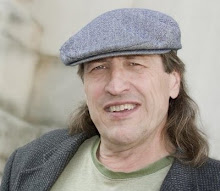
It took me a while to find out where Cowboys and Aliens got the jail scene. When seeing it, I remembered seeing a similar scene somewhere else, but could not recall the exact movie.
Since it was clear that the film had made liberal use of other Clint Eastwood films, especially The Unforgiven and High Plains Drifter, I started going back through my collection of Eastwood Westerns until I found it in Joe Kidd.
While Kidd isn’t woken

by Dollar Hide’s kid spitting on him, the way Jake is in Cowboys, Joe Kidd does wake up to an annoying prisoner who teases him by denying him a cup of coffee so that when Eastwood is uncuffed from his bunk, he hits the guy in the face with the pot.
There are other similarities in the way Joe Kidd handles himself when it comes to other bad guys, a kind of ritualistic violence that appears in the characters of both films. We even have a minister helping him by providing him later in the film with a gun – although it appears that the minister in Cowboys more closely resembles the fighting minister in The Searchers from which Cowboys also drew heavily, especially regarding the back story of a half breed Indian that the John Wayne character refuses to acknowledge as kin, and the eventual coming around to make sense at the end that kin often is how people act rather than blood.

Cowboys, however, doesn’t quite capture the intensity of the John Wayne character, although both films are about searching out loved ones that have been abducted, and doubting in some ways that they can be recovered. In the end of both films, the searchers as well as those sought out are changed significantly.
We get a lot from High Plains Drifter that includes a mining town, and the return of someone that may or may not have been death, to avenge some wrong of the past – or as the minister in Cowboys puts it, to set things right.
Jake and the drifter are avenging angels, although the drifter is m

uch darker and questionably a fallen angel, who brings those who murdered him to hell.This is reflected in a line that Jake has in Cowboys when he has been beaten and the bad guy asks where the gold he stole from him is: Demons took it, and when you get to hell, you can ask for it back.








